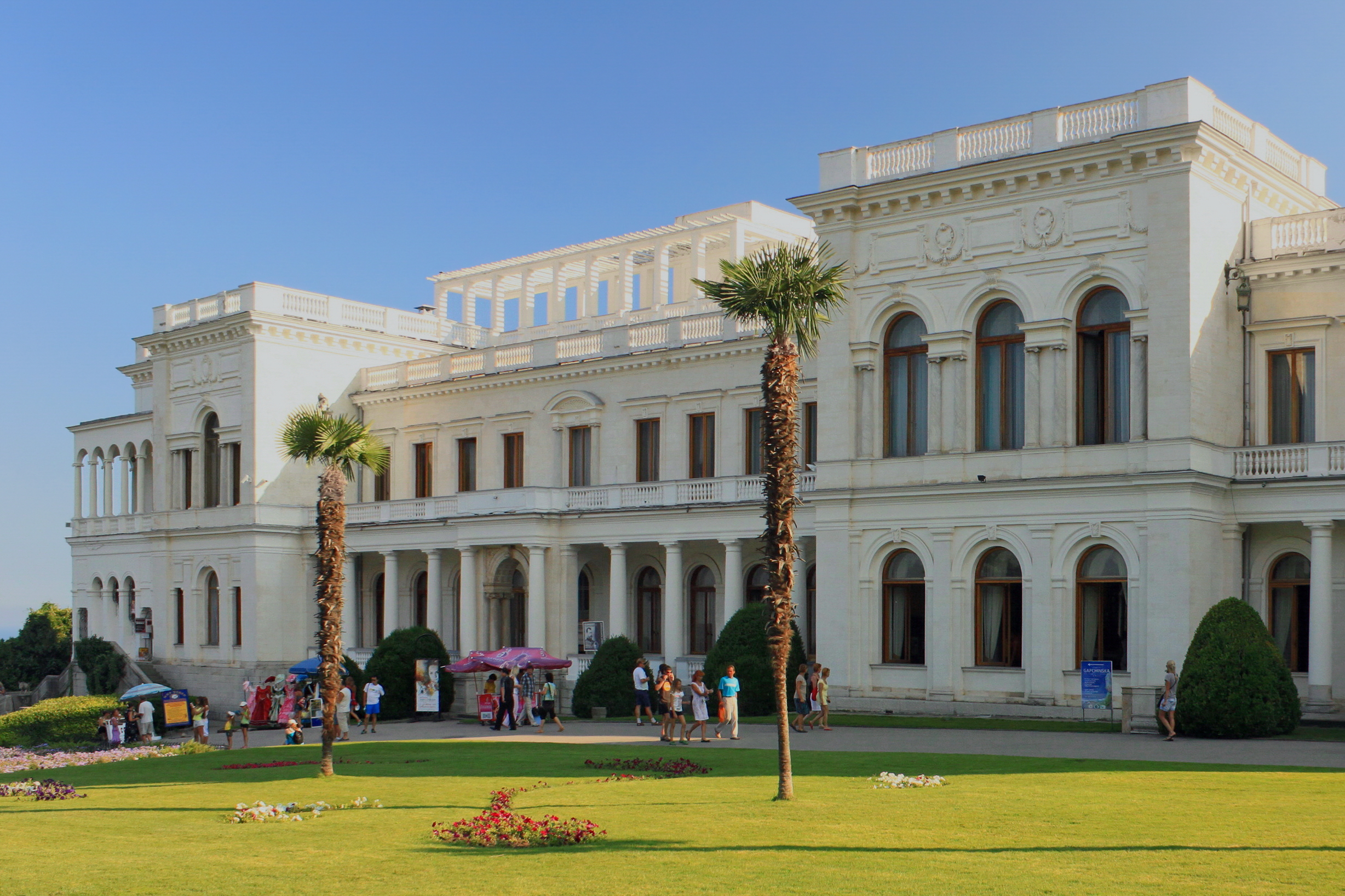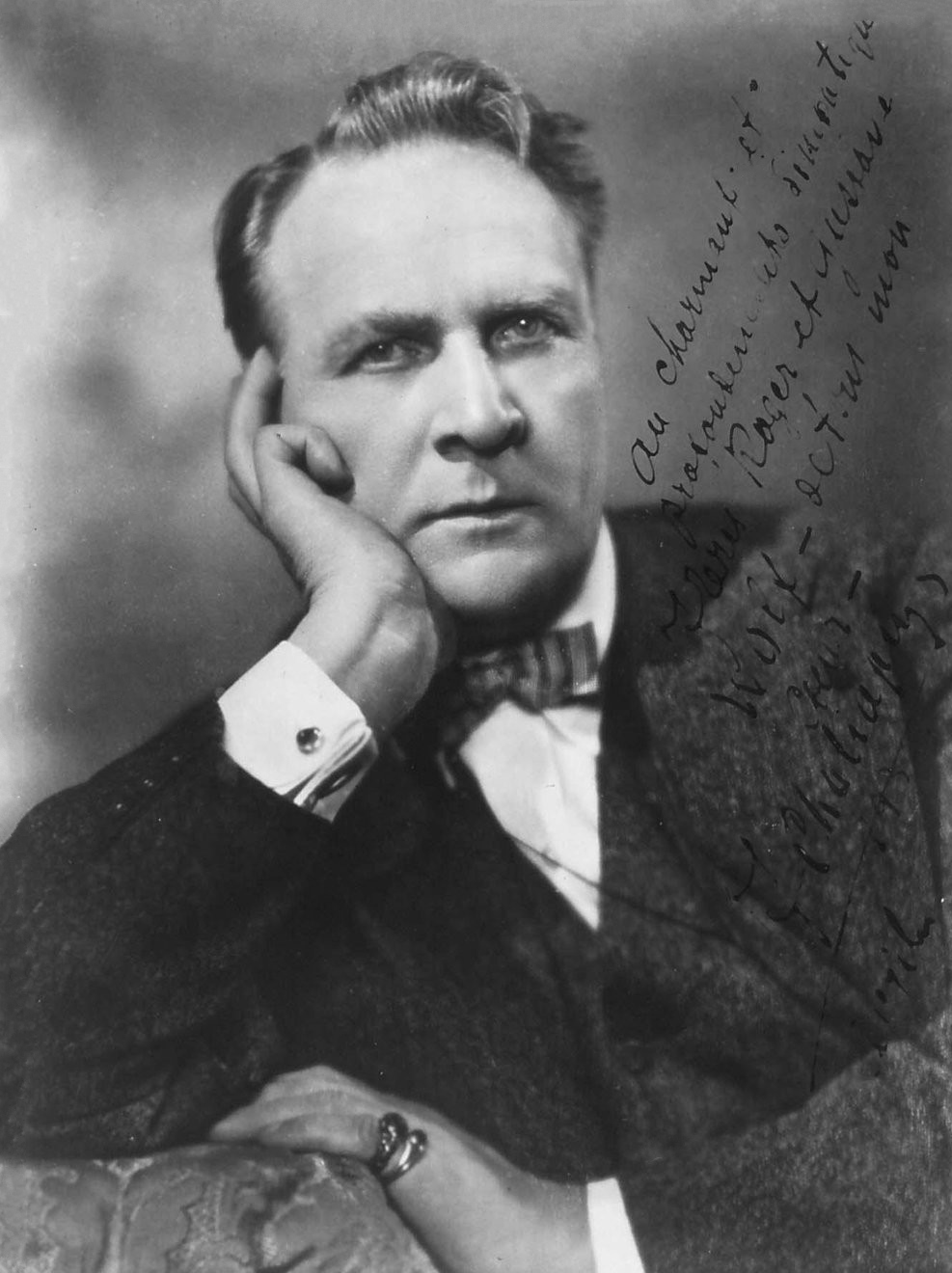|
Roffe Bath
Roffe Bath is a historical monument located in the center of Yalta, Crimea, part of the ensemble "France" built by the famous architect Nikolay Krasnov, designer of the Greater Livadia Palace, by the order of merchant Alexey I. Roffe, the owner of the guild "Rofe (Roffe) and Sons" with the pool added in front of the portal in Moorish style. Famous personalities as Ivan Bunin, Fyodor Shalyapin, Anton Chekhov Anton Pavlovich Chekhov (; 29 January 1860 Old Style date 17 January. – 15 July 1904 Old Style date 2 July.) was a Russian playwright and short-story writer who is considered to be one of the greatest writers of all time. His career ... and other members of the Society of Writers and scholars stayed at the Roffe Bath. External linksYalta Real Estate of Sofia Rotaru (in Russian) {{coord, 44, 29, 58, N, 34, 09, 19, E, type:landmark_source:kolossus-ruwiki, display=title Buildings and structures in Yalta Monuments and memorials in Ukraine Cultural heritage mo ... [...More Info...] [...Related Items...] OR: [Wikipedia] [Google] [Baidu] |
Yalta
Yalta (: Я́лта) is a resort city on the south coast of the Crimean Peninsula surrounded by the Black Sea. It serves as the administrative center of Yalta Municipality, one of the regions within Crimea. Yalta, along with the rest of Crimea, is internationally recognised as part of Ukraine, and is considered part of the Autonomous Republic of Crimea. However, it is de facto occupied by Russia, which annexed Crimea in 2014 and regards the town as part of the Republic of Crimea. According to the most recent census, its population was . The city is located on the site of the ancient Greek colony of Yalita. It is said to have been founded by the Greek settlers who were looking for a safe shore (Γιαλός, ''yalos'' in Greek) on which to land. It is situated on a deep bay facing south towards the Black Sea, surrounded by the mountain range Ai-Petri. It has a warm humid subtropical climate and is surrounded by numerous vineyards and orchards. The area became famous when the c ... [...More Info...] [...Related Items...] OR: [Wikipedia] [Google] [Baidu] |
Crimea
Crimea, crh, Къырым, Qırım, grc, Κιμμερία / Ταυρική, translit=Kimmería / Taurikḗ ( ) is a peninsula in Ukraine, on the northern coast of the Black Sea, that has been occupied by Russia since 2014. It has a population of 2.4 million. The peninsula is almost entirely surrounded by the Black Sea and the smaller Sea of Azov. The Isthmus of Perekop connects the peninsula to Kherson Oblast in mainland Ukraine. To the east, the Crimean Bridge, constructed in 2018, spans the Strait of Kerch, linking the peninsula with Krasnodar Krai in Russia. The Arabat Spit, located to the northeast, is a narrow strip of land that separates the Sivash lagoons from the Sea of Azov. Across the Black Sea to the west lies Romania and to the south is Turkey. Crimea (called the Tauric Peninsula until the early modern period) has historically been at the boundary between the classical world and the steppe. Greeks colonized its southern fringe and were absorbed by the Ro ... [...More Info...] [...Related Items...] OR: [Wikipedia] [Google] [Baidu] |
Nikolay Krasnov (architect)
Nikolay Petrovich Krasnov (Russian: Николай Петрович Краснов; 23 November 1864 – 8 December 1939) was a Russian Serbian architect and painter, who served as Chief Architect of Yalta, Crimea, between 1887 and 1899. From 1922 he lived and worked in the Kingdom of Yugoslavia, and was a key figure in the architectural development of Belgrade. Life and career Early life and education Krasnov started attending the Moscow School of Painting, Sculpture and Architecture in 1876, aged 12. As a young artist he received patronage from Sergey Tretyakov, brother of the founder of Moscow's Tretyakov Gallery, and entrepreneur Petar Gubonyin. 1887–1899: Chief Architect of Yalta In 1887 Krasnov took up the post of Chief Architect in Yalta, for which he was paid 900 roubles per year. He had a contract for 24 years, of which he served 12. Taking up the post at the age of 23, Krasnov had large responsibility for the rapid growth of the city at the time. He started by exp ... [...More Info...] [...Related Items...] OR: [Wikipedia] [Google] [Baidu] |
Livadia Palace
Livadia Palace (russian: Ливадийский дворец, uk, Лівадійський палац) is a former summer retreat of the last Russian tsar, Nicholas II, and his family in Livadiya, Crimea. The Yalta Conference was held there in 1945, when the palace housed the apartments of Franklin Delano Roosevelt and other members of the American delegation – the Soviet delegation was housed in the Yusupov Palace, and the British in the Vorontsov Palace some five miles distant. Today the palace houses a museum, but it is sometimes used for international summits. History Formerly granted to Lambros Katsonis and later a possession of the Potocki family, the Livadia estate became a summer residence of the Russian imperial family in the 1860s, when architect Ippolito Monighetti built a large palace, a small palace, and a church there. The residence was frequented by Alexander II of Russia, while his successor Alexander III used to live (and died) in the smaller palace ... [...More Info...] [...Related Items...] OR: [Wikipedia] [Google] [Baidu] |
Moorish Architecture
Moorish architecture is a style within Islamic architecture which developed in the western Islamic world, including al-Andalus (on the Iberian peninsula) and what is now Morocco, Algeria, and Tunisia (part of the Maghreb). The term "Moorish" comes from the historical Western European designation of the Muslim inhabitants of these regions as "Moors". Scholarly references on Islamic architecture often refer to this architectural tradition by a more geographic designation, such as architecture of the Islamic West or architecture of the Western Islamic lands, and some references on Islamic art and architecture consider use of the term "Moorish" to be outdated or contested. This architectural style blended influences from Berber culture in North Africa, pre-Islamic Iberia (Roman, Byzantine, and Visigothic), and contemporary artistic currents in the Islamic Middle East to elaborate a unique style over centuries with recognizable features such as the horseshoe arch, '' riad'' gardens ( ... [...More Info...] [...Related Items...] OR: [Wikipedia] [Google] [Baidu] |
Ivan Bunin
Ivan Alekseyevich Bunin ( or ; rus, Ива́н Алексе́евич Бу́нин, p=ɪˈvan ɐlʲɪˈksʲejɪvʲɪtɕ ˈbunʲɪn, a=Ivan Alyeksyeyevich Bunin.ru.vorb.oga; – 8 November 1953) was the first Russian writer awarded the Nobel Prize for Literature. He was noted for the strict artistry with which he carried on the classical Russian traditions in the writing of prose and poetry. The texture of his poems and stories, sometimes referred to as "Bunin brocade", is considered to be one of the richest in the language. Best known for his short novels '' The Village'' (1910) and ''Dry Valley'' (1912), his autobiographical novel '' The Life of Arseniev'' (1933, 1939), the book of short stories ''Dark Avenues'' (1946) and his 1917–1918 diary ('' Cursed Days'', 1926), Bunin was a revered figure among white emigres, European critics, and many of his fellow writers, who viewed him as a true heir to the tradition of realism in Russian literature established by Tolst ... [...More Info...] [...Related Items...] OR: [Wikipedia] [Google] [Baidu] |
Fyodor Shalyapin
Feodor Ivanovich Chaliapin ( rus, Фёдор Ива́нович Шаля́пин, Fyodor Ivanovich Shalyapin, ˈfʲɵdər ɪˈvanəvʲɪtɕ ʂɐˈlʲapʲɪn}; April 12, 1938) was a Russian opera singer. Possessing a deep and expressive bass voice, he enjoyed an important international career at major opera houses and is often credited with establishing the tradition of naturalistic acting in his chosen art form. During the first phase of his career, Chaliapin endured direct competition from three other great basses: the powerful (1869–1942), the more lyrical (1871–1948), and Dmitri Buchtoyarov (1866–1918), whose voice was intermediate between those of Sibiriakov and Kastorsky. The fact that Chaliapin is far and away the best remembered of this magnificent quartet of rival basses is a testament to the power of his personality, the acuteness of his musical interpretations, and the vividness of his performances. Spelling note He himself spelled his surname, French-style ... [...More Info...] [...Related Items...] OR: [Wikipedia] [Google] [Baidu] |
Anton Chekhov
Anton Pavlovich Chekhov (; 29 January 1860 Old Style date 17 January. – 15 July 1904 Old Style date 2 July.) was a Russian playwright and short-story writer who is considered to be one of the greatest writers of all time. His career as a playwright produced four classics, and his best short stories are held in high esteem by writers and critics."Stories ... which are among the supreme achievements in prose narrative.Vodka miniatures, belching and angry cats George Steiner's review of ''The Undiscovered Chekhov'', in ''The Observer'', 13 May 2001. Retrieved 16 February 2007. Along with Henrik Ibsen and August Strindberg, Chekhov is often referred to as one of the three seminal figures in the birth of early modernism in the theatre. Chekhov was a physician by profession. "Medicine is my lawful wife", he once said, "and literature is my mistress." Chekhov renounced the theatre after the reception of ''The Seagull'' in 1896, but the play was revived to acclaim in 189 ... [...More Info...] [...Related Items...] OR: [Wikipedia] [Google] [Baidu] |
Buildings And Structures In Yalta
A building, or edifice, is an enclosed structure with a roof and walls standing more or less permanently in one place, such as a house or factory (although there's also portable buildings). Buildings come in a variety of sizes, shapes, and functions, and have been adapted throughout history for a wide number of factors, from building materials available, to weather conditions, land prices, ground conditions, specific uses, prestige, and aesthetic reasons. To better understand the term ''building'' compare the list of nonbuilding structures. Buildings serve several societal needs – primarily as shelter from weather, security, living space, privacy, to store belongings, and to comfortably live and work. A building as a shelter represents a physical division of the human habitat (a place of comfort and safety) and the ''outside'' (a place that at times may be harsh and harmful). Ever since the first cave paintings, buildings have also become objects or canvasses of much artistic ... [...More Info...] [...Related Items...] OR: [Wikipedia] [Google] [Baidu] |
Monuments And Memorials In Ukraine
A monument is a type of structure that was explicitly created to commemorate a person or event, or which has become relevant to a social group as a part of their remembrance of historic times or cultural heritage, due to its artistic, historical, political, technical or architectural importance. Some of the first monuments were dolmens or menhirs, megalithic constructions built for religious or funerary purposes. Examples of monuments include statues, (war) memorials, historical buildings, archaeological sites, and cultural assets. If there is a public interest in its preservation, a monument can for example be listed as a UNESCO World Heritage Site. Etymology It is believed that the origin of the word "monument" comes from the Greek ''mnemosynon'' and the Latin ''moneo'', ''monere'', which means 'to remind', 'to advise' or 'to warn', however, it is also believed that the word monument originates from an Albanian word 'mani men' which in Albanian language means 'remember ... [...More Info...] [...Related Items...] OR: [Wikipedia] [Google] [Baidu] |







